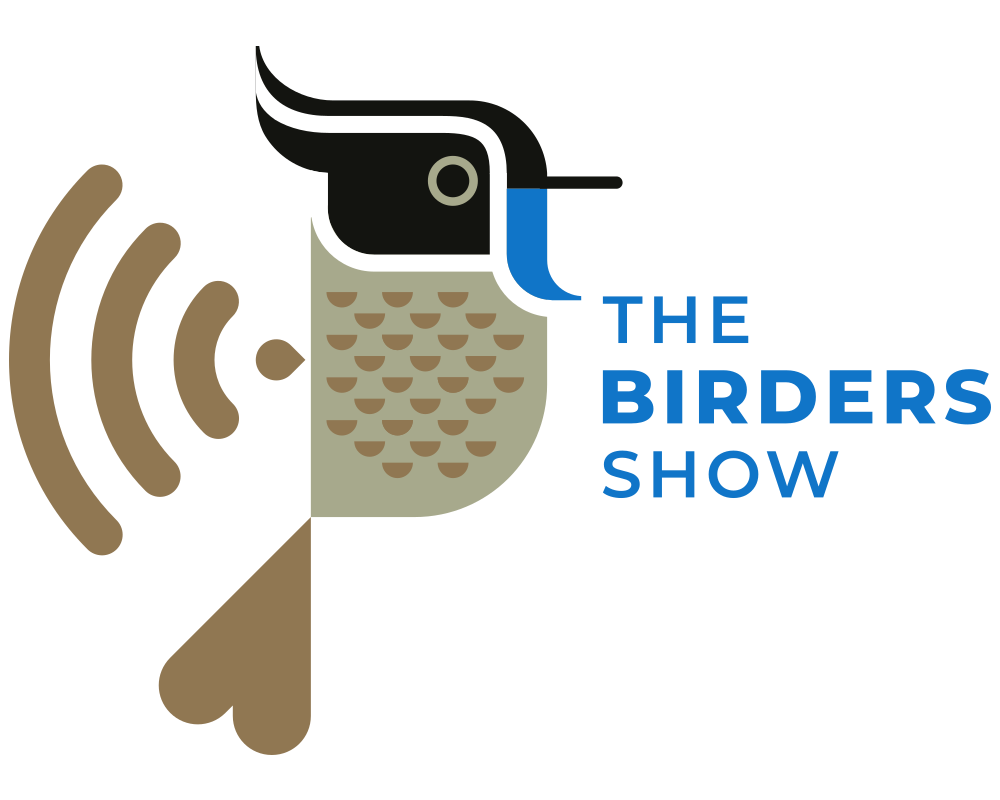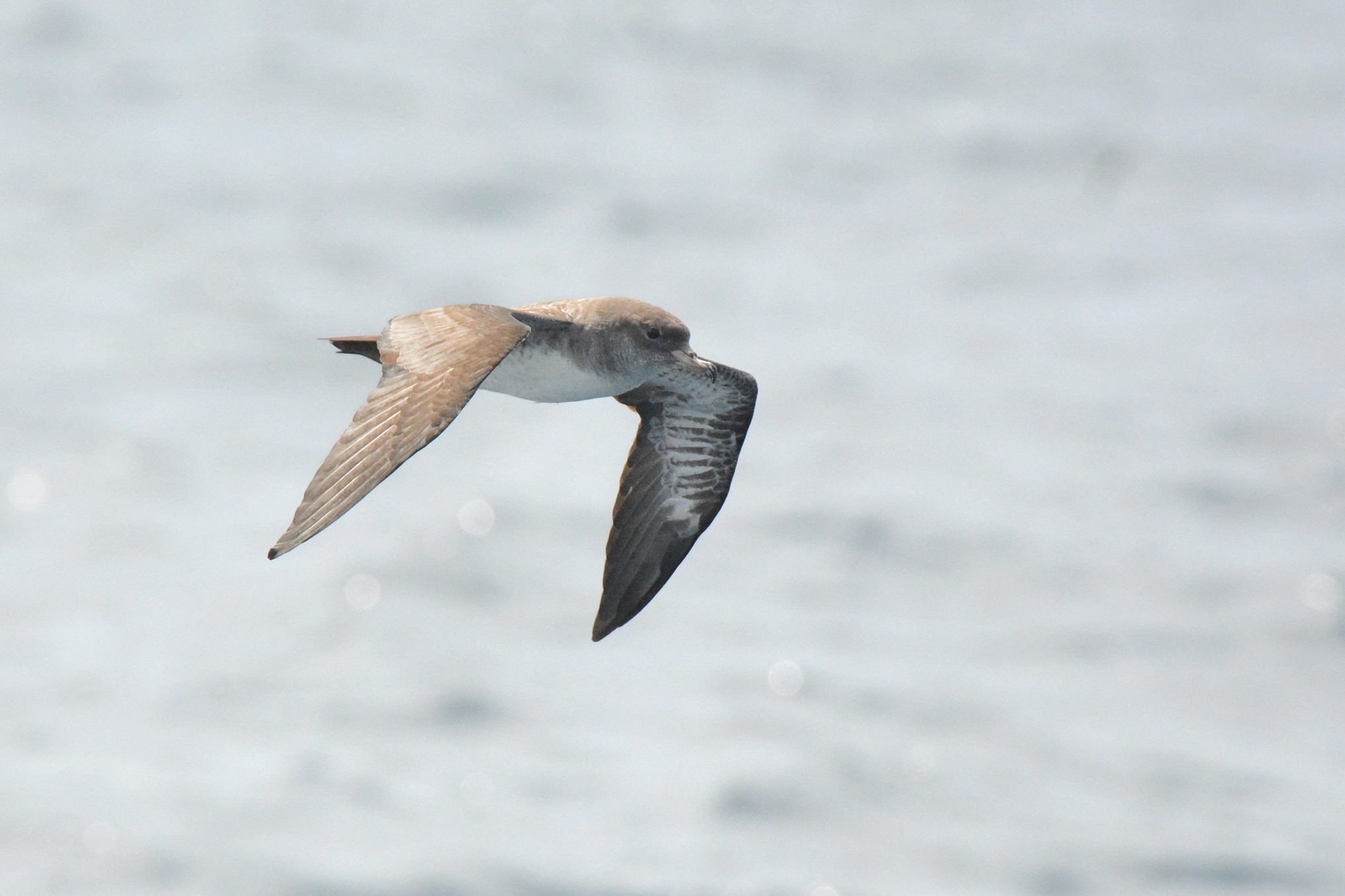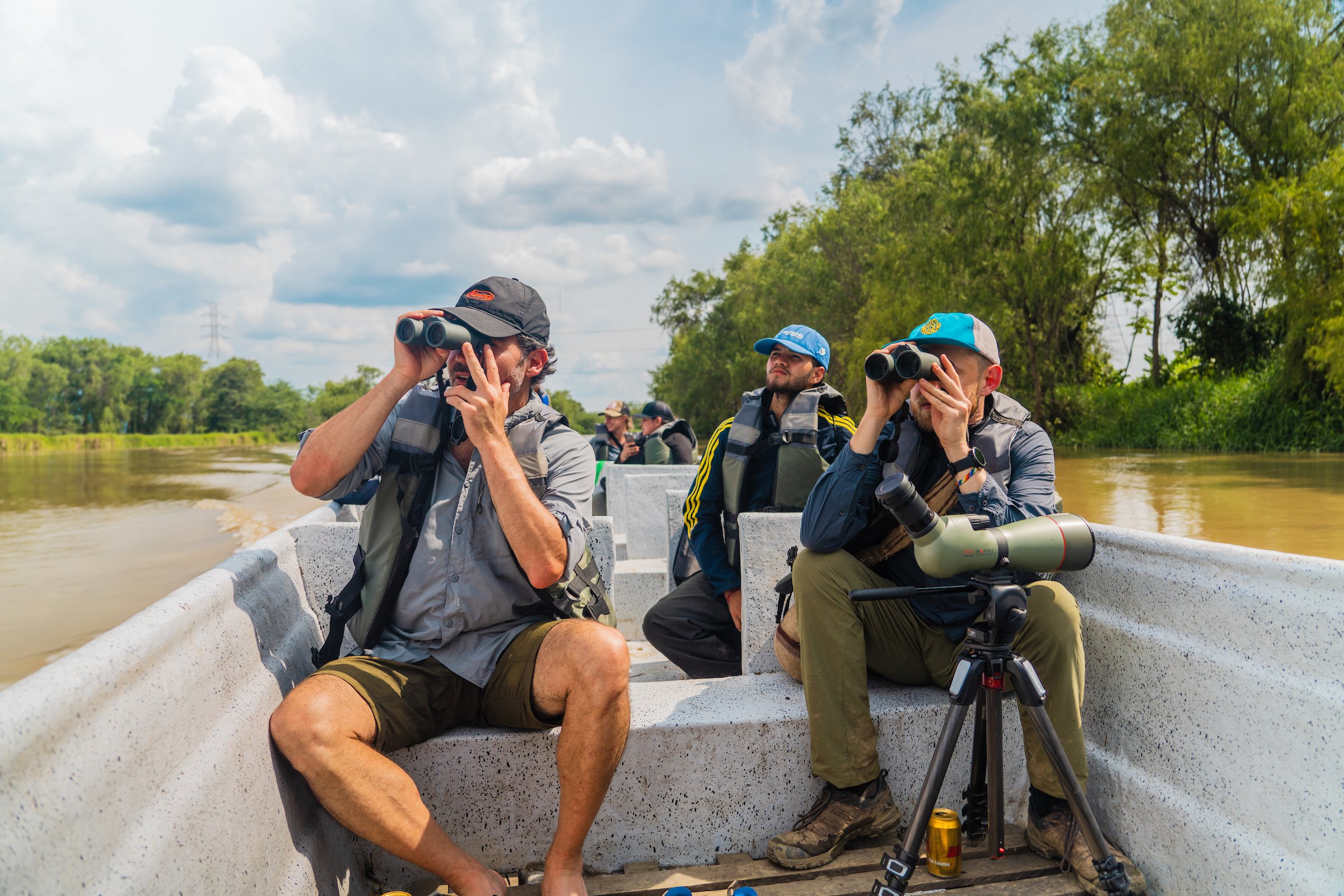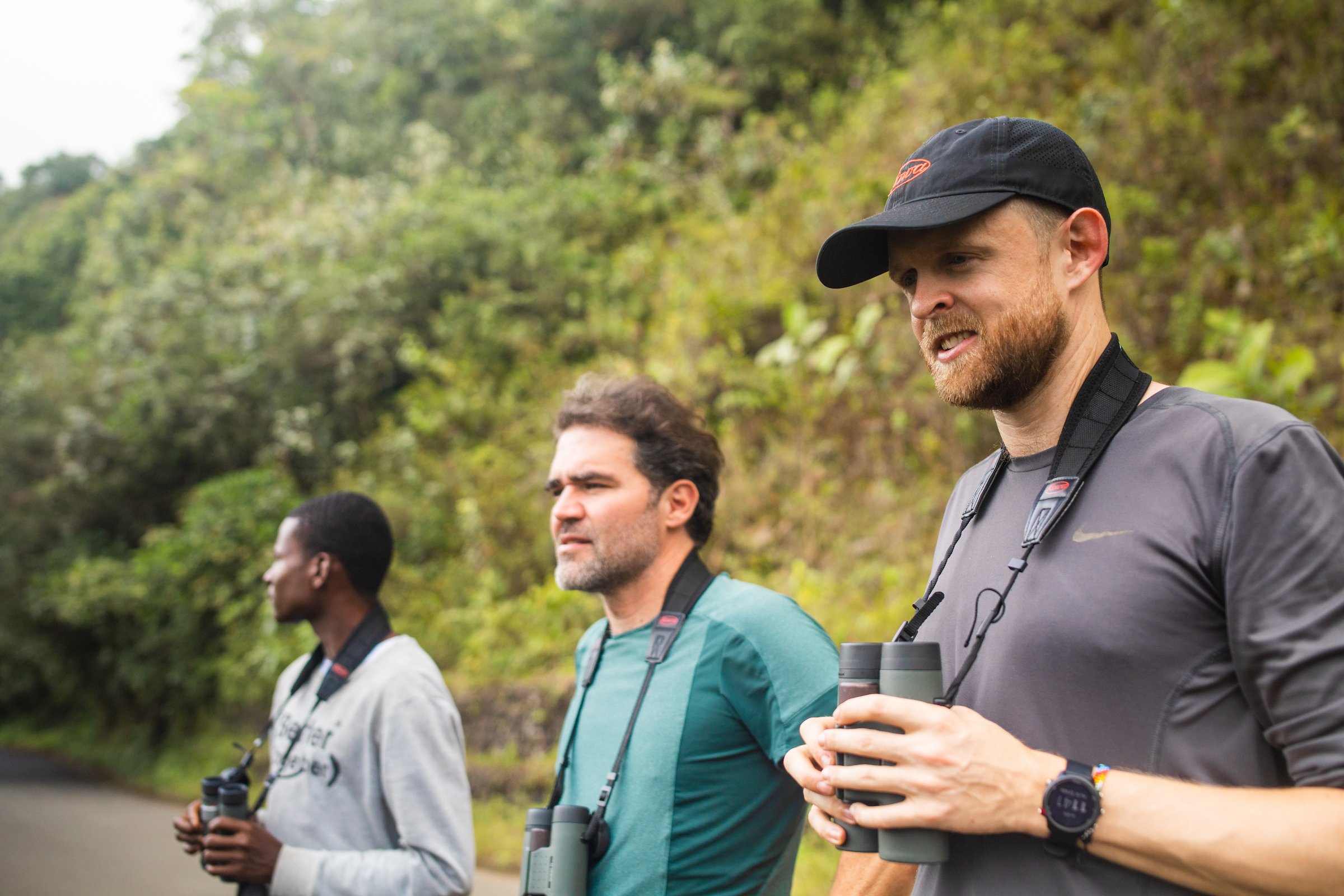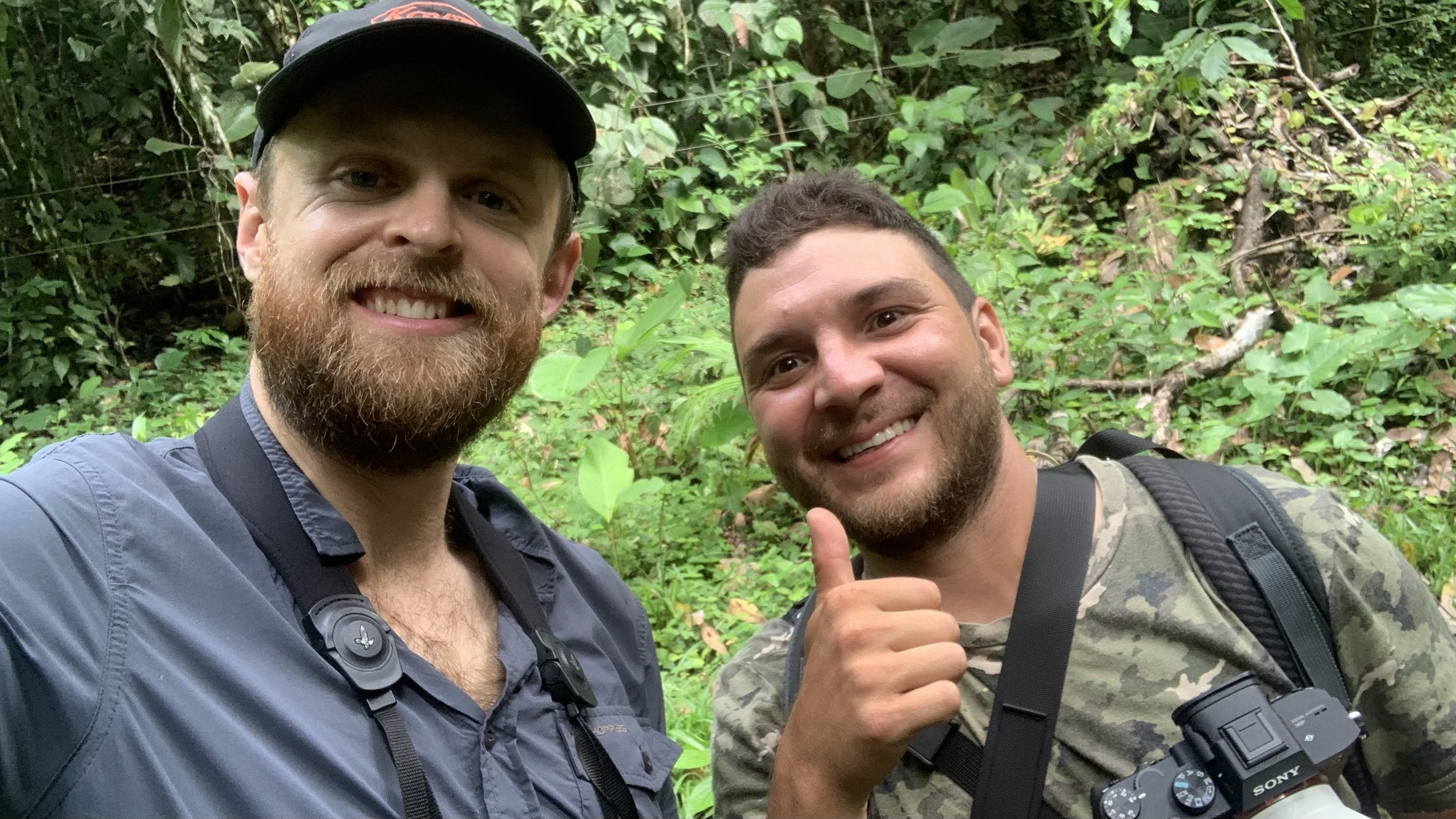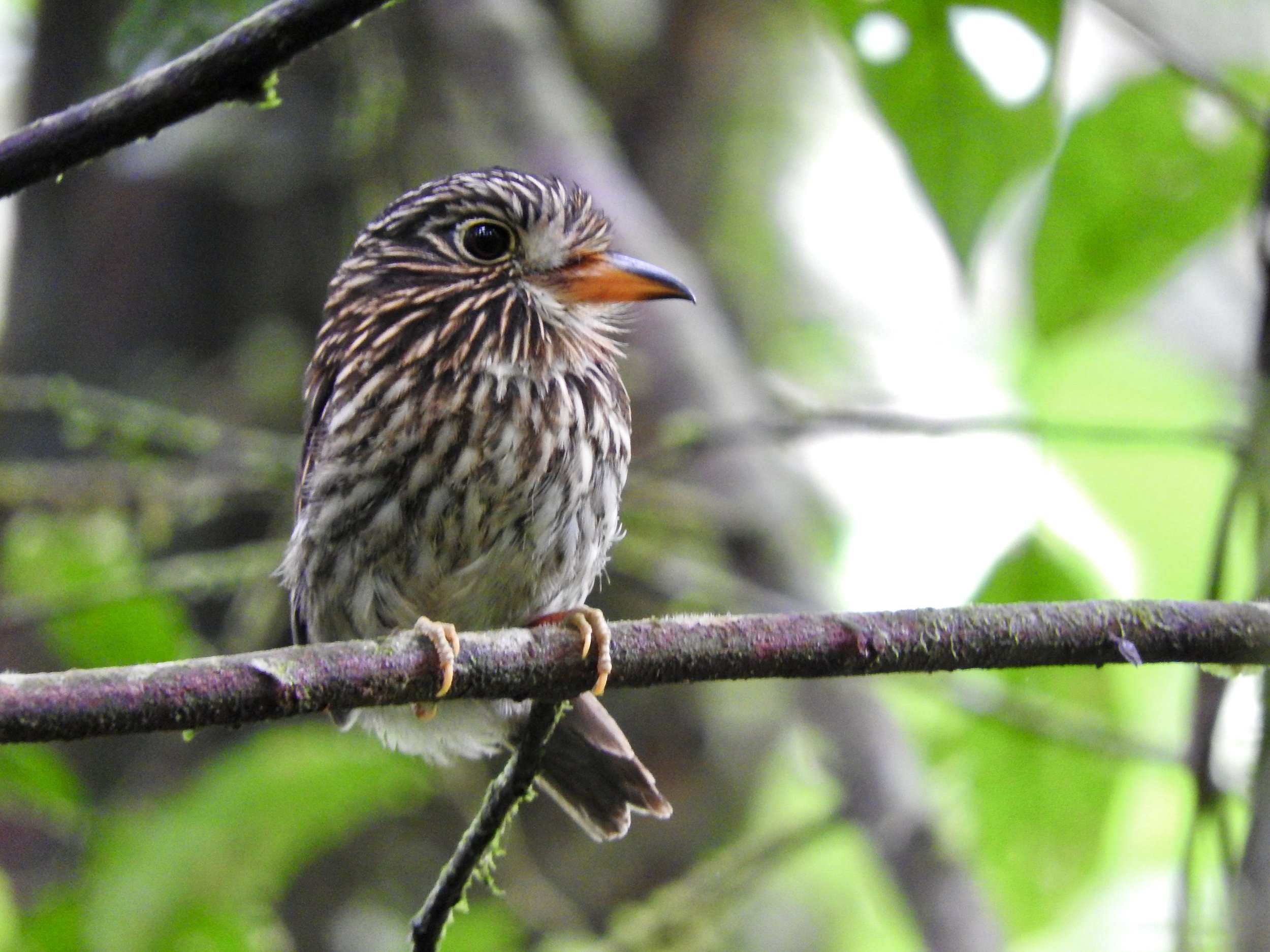Chris Bell’s Top 10 Birds of 2022: Part 2
Perija Parakeet
Here’s Part 2 of Chris’s Top 10 birds of 2022. Which birds make the final five? Find out here:
5. Pink-footed and Wedge-tailed Shearwaters
Pink-footed Shearwater (Photo: Kyle Kittelberger)
I'm fascinated by seabirds. The lives of ocean-going species are almost totally alien to those of us who dwell on land, and the migratory and survival feats they routinely engage in are mind-blowing. Unfortunately, however, birding in Colombia doesn't give me many opportunities to regularly observe seabirds (gulls and terns aside). The tropics aren't home to the wonderful seabird cliffs I grew up visiting like those on the Welsh coast, and pelagic birding trips rarely happen here. The Pacific waters of Colombia are, in theory, an excellent place to observe seabirds. Still, because of the astonishing bird diversity on land, Colombian birders don't have pelagic birding on their radar just yet.
However, there's been a gradual increase in interest in pelagic birding, and in August, I joined a trip departing from Tumaco on the southern Pacific coast. Half-a-dozen birders on a fishing boat heading 50 km out into the Pacific Ocean in search of seabirds, one of the first such organized trips in Colombian birding. I couldn't wait to add some seabirds to my Colombian life list, and the family I especially wanted to see were shearwaters.
There's something so impossibly elegant and mysterious about shearwaters: they seem to me just about the most perfectly evolved fliers out there (with due respect to swifts), and I'd always wanted to have a shearwater or two on my Colombia list. After a long journey out into the deep ocean from Tumaco, we saw our first pelagic birds. A Parkinson's Petrel provided the first real "wow" moment of the trip, but the following two species really got my heart racing. In quick succession, our boat was visited by Wedge-tailed and Pink-footed Shearwaters, skimming low over the waves as they investigated our boat and came in for chum. The way they quartered over the ocean's surface was remarkable; I could have watched them all day.
So the No. 5 spot on this list is shared between Pink-footed and Wedge-tailed Shearwaters for helping make one of my wilder Colombian birding dreams come true. An honorable mention should also go to the two smart little Red-necked Phalaropes we saw later in the day.
An honorable mention to this Red-necked Phalarope (Photo: Kyle Kittelberger)
4. Blue-billed Curassow
As one of Colombia's most critically endangered and hard-to-see endemic birds, the Blue-billed Curassow was naturally a bird I desperately wanted to see. These days, most birders get their lifer Blue-billed Curassow at the ProAves El Paujil Reserve in Santander region. There, large groups of curassows visit the reserve house most days to feed, and it's possible to see more than a dozen at once.
Of course, I'd love to see such a beautiful bird up close like that, but I also liked the idea of seeing a Blue-billed Curassow that felt a little bit less like a chicken in the garden! And realistically, my only chance to do that was to spot one in Tayrona National Park. But, as any birder in the Neotropics knows, seeing a curassow in the wild is easier said than done.
During my family holiday on the Caribbean coast in June, I planned a morning of birding in Tayrona with my parents and a local guide. I had a few possible lifer targets - Southern Bentbill and One-colored Becard - but it was the curassow I was crossing my fingers for. Unfortunately, our local guide told me it wasn't an ideal time: the dry season is better, as the birds are more localized near the limited water sources.
The bentbill and the becard proved relatively simple: the latter even feeding babies at a nest next to the ranger stations. Around mid-morning, we left my parents to sit on a beach, and the guide and I headed back to the becard nest. I wanted to get some digiscoped video of the parents feeding the young. While I was filming, a curassow called its low booming call from the nearby forest. The guide silently beckoned me over, and we tiptoed into the dense undergrowth, trying not to make any noise.
Staying totally quiet proved near impossible with all the dry leaves underfoot. But it was good that we made some noise because one branch crack caused a large, turkey-like bird to fly from the dense canopy into a perch overhead: a male Blue-billed Curassow! It perched up in the canopy, giving me beautiful views before flying off into the distance. I was too busy watching it to take photos, but I managed the short cellphone video you can see in this post.
As one of my most-wanted Colombian endemics, it would have made this list regardless, but seeing it in a truly "natural" state made it even more special. So welcome to the Top 5, Blue-billed Curassow!
3. Inca Tern
Back-of-camera shot of the Tumaco Inca Tern
This is another Top 10 species that I'd seen before. In Lima, if you go down to the docks to take a boat or eat some fresh ceviche, there are Inca Terns practically stealing the fish from your table. It doesn't make these stunners any less beautiful, but they are relatively common along the Peruvian coast. However, in Colombia, Inca Tern is almost impossibly rare. In fact, before 2022, there were only two records of the species for Colombia on eBird, both far offshore on cruise ships or remote and distant islands. There had never been a continental record of Inca Tern in Colombia.
During the same visit to Tumaco for the pelagic mentioned above, I had a day to spare around the town. Tumaco has some excellent birding along the coastal area, and my plan was for a chilled-out birding day on the beach. When I arrived, I walked down to the beach to meet another participant on the pelagic, Juan David Ramirez. As I walked towards him, something in his expression made me pretty sure he was about to "grip me off" in birding parlance (tell me about a rarity he'd seen and I'd missed). I was right: he showed me a photo of an Inca Tern he'd taken the evening before!
Now, for this bird to be in Colombia meant it was either seriously lost or some strong winds were buffeting the Peruvian coast and sending it north. A wayward Nazca Booby flew in at that exact moment to prove the latter point (another excellent Colombia lifer with only 50-odd records on eBird). So I had a hunch that this lost Inca Tern would return to the same rocks where it roosted last night.
So, after a day of beach birding, we returned to El Morro beach and fixed our eyes on that big offshore rock. Sure enough, at about 5:20 pm, we spotted a small, dark bird flying purposefully towards the rock. I got my bins on it; sure enough, it was the Inca Tern! One of our group managed a grainy record shot before the bird looped around the rock, evidently found no perches to its liking, and set off back the way it had come.
They were fleeting views, but to see the first-ever continental Inca Tern in Colombia was an extraordinary moment, so Top 3 it is!
2. Perija Parakeet
A stunning Perija Parakeet
For my first birding adventure of 2022, I followed in the footsteps of my co-host, Diego, and visited the foothills of the Perijá Mountains on the Venezuelan border to see the Perijá subspecies of Painted Parakeet. This species is barely known in Colombia, with very few records. But it seemed like a new, relatively accessible spot had been found where the birds could be seen with relative ease. Diego visited towards the end of 2021. During my Christmas holidays in England, I saw his awesome videos of these rare and little-known parakeets and knew I had to visit them as soon as possible. So I planned my visit for the first three-day holiday weekend of 2022 in January and started counting the days!
After a flight from Bogota to Valledupar, I took a bus a couple of hours south to the little town of La Jagua de Ibirico before hopping onto a small truck another hour to La Victoria de San Isidro. From there, it was another hour on the back of a motorbike to a small house in an idyllic little forested valley where I would look for the parakeets.
It turned out that I didn't have to look for long: within a few minutes of arriving, we heard the Perija Parakeets calling just above the house, walked up the hill, and enjoyed point-blank views of them feeding peacefully in a fruit tree. I've never had an easier time seeing such a rare and beautiful bird!
Over the next two days, I enjoyed multiple close encounters with the parakeets and a host of other interesting, localized species, including a few bonus lifers. But I really just wanted to watch the parakeets: enjoying such breathtaking views of a near-mythical species for Colombia was beyond my wildest birding dreams when I arranged the trip.
Perija Parakeet would typically take the No. 1 spot in this list if it weren't for another equally "lost" species that takes the crown for the best bird of the year!
1. Red Siskin
My best bird of 2022: Red Siskin
Fending off some stiff competition, the award for the best bird I saw in 2022 goes to the unforgettable Red Siskin!
I should say from the off that I won't be revealing exactly where I saw this species in this blog: Red Siskin is highly endangered, and one of the major causes of its decline is the caged bird trade. So let's just say it was somewhere in the northern Colombian Andes and leave it at that.
Like the Perija Parakeet, Red Siskin is a barely known species in Colombia, with only a few contemporary records. However, a positive side effect of the increase in birders across Colombia is that remote rural areas are now regularly birded. In recent years, this has turned up quite a few "lost" species. One such species is Red Siskin. Again, following a tip from Diego, I made plans to visit a remote rural area where Red Siskin was being reported from a garden.
After a few hours of travel by plane, bus, and truck, I arrived at the location. The local guide assured me the species was reliable here, but I was a bit nervous about whether it would show up, and I kept my fingers firmly crossed.
I needn't have bothered: within half an hour of arriving, a small flock of half a dozen Red Siskins arrived in front of the house to feed on flowering grasses. Two bright red males even perched long enough for me to record a few minutes of digiscoped videos (typically not an easy task with a family as flighty and restless as siskins). What a bird! This is a species I remember seeing in my early field guides to Colombia and assuming I would never be lucky enough to see.
The other nine species on this list were all delightful to see in their own way, but nothing quite beats the excitement and joy of finally laying eyes on a Red Siskin in Colombia. I was shaking from the excitement and adrenaline of it!
